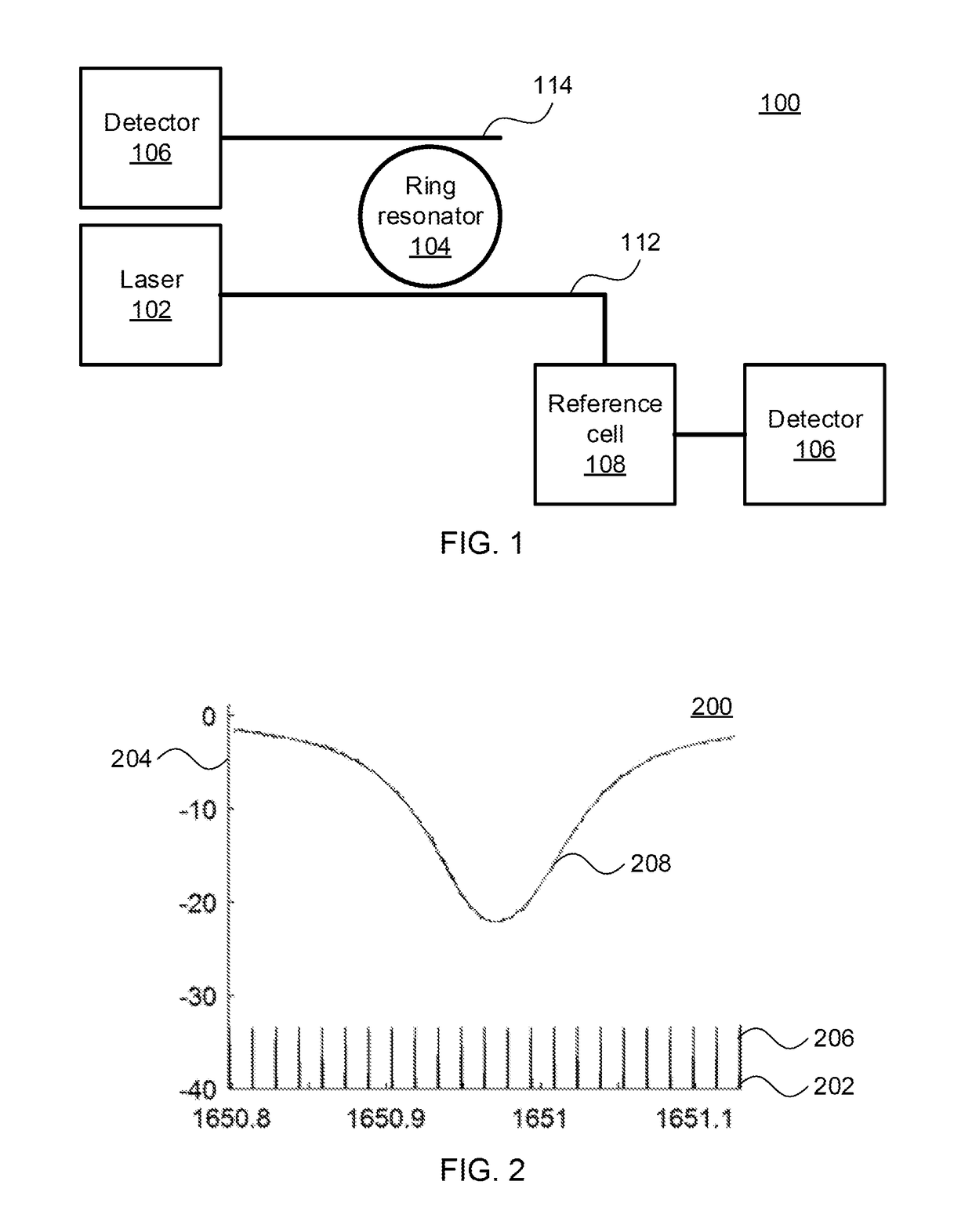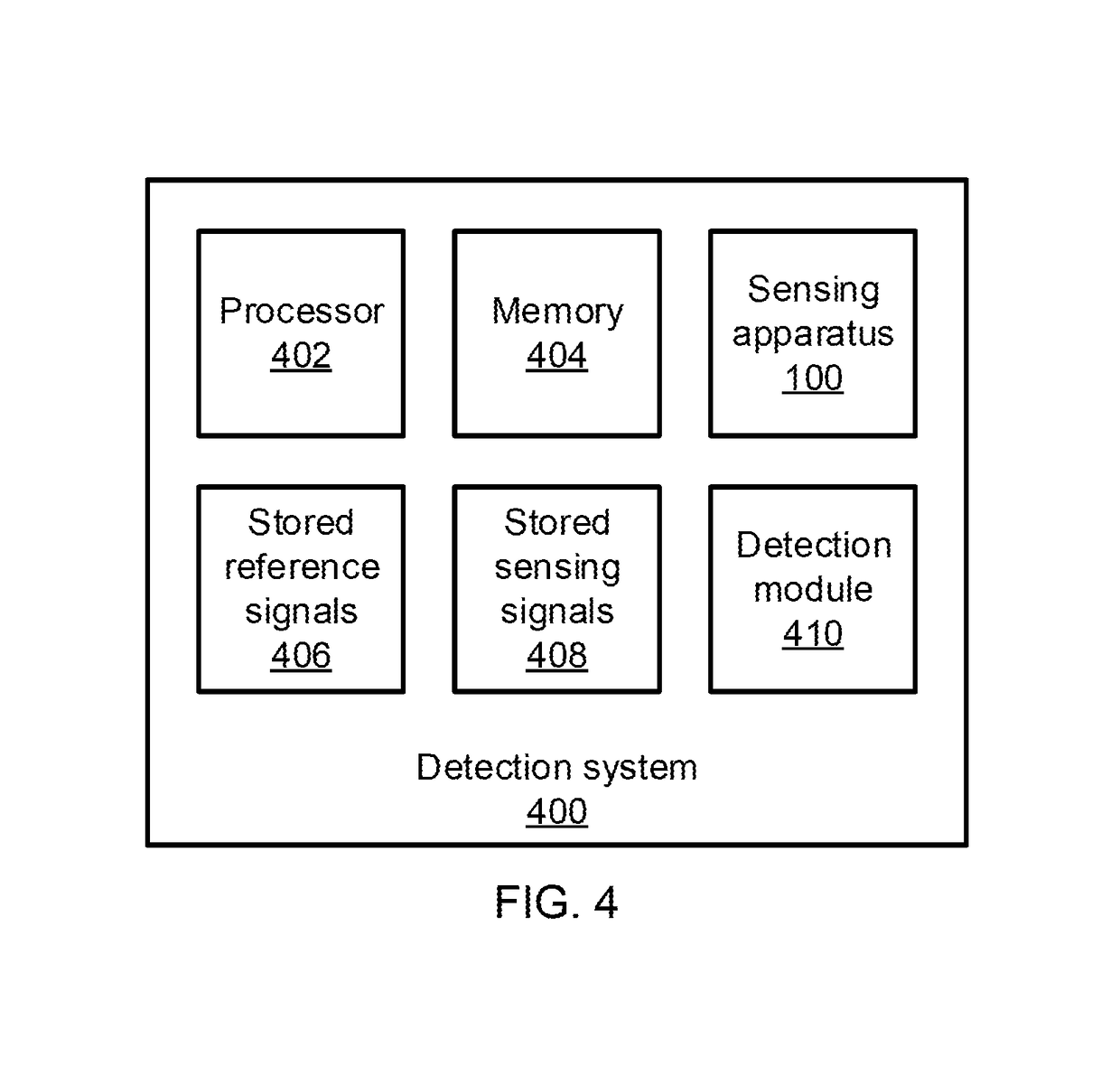Untuned resonance traced gas sensing
a gas sensing and resonance technology, applied in the field of gas sensing, can solve problems such as difficulty in field deployment of such sensors
- Summary
- Abstract
- Description
- Claims
- Application Information
AI Technical Summary
Benefits of technology
Problems solved by technology
Method used
Image
Examples
Embodiment Construction
[0014]Embodiments of the present invention provide sensitive gas sensing using low-loss waveguide sensors that have relatively short transmission paths. An optical resonator ring is used as the sensing element, with a path length less than a tenth of what would be needed to provide a similar sensitivity with a linear waveguide.
[0015]Referring now to FIG. 1, a block diagram of the sensing apparatus 100 is shown. A laser 102 generates an optical signal and launches the optical signal on an input waveguide 112. It is specifically contemplated that the waveguide 112 may be formed from a low-loss material, characterized by small, but non-zero, amounts of power being lost as the signal propagates. The waveguide 112 may be formed from silicon nitride waveguides fabricated on top of a silicon dioxide lower cladding. The role of the top cladding is filled by the gas in either the sensing region 104 or reference cell region 108. To increase the electric field overlap with the gas, a silicon n...
PUM
| Property | Measurement | Unit |
|---|---|---|
| circumference | aaaaa | aaaaa |
| width | aaaaa | aaaaa |
| width | aaaaa | aaaaa |
Abstract
Description
Claims
Application Information
 Login to View More
Login to View More - R&D
- Intellectual Property
- Life Sciences
- Materials
- Tech Scout
- Unparalleled Data Quality
- Higher Quality Content
- 60% Fewer Hallucinations
Browse by: Latest US Patents, China's latest patents, Technical Efficacy Thesaurus, Application Domain, Technology Topic, Popular Technical Reports.
© 2025 PatSnap. All rights reserved.Legal|Privacy policy|Modern Slavery Act Transparency Statement|Sitemap|About US| Contact US: help@patsnap.com



